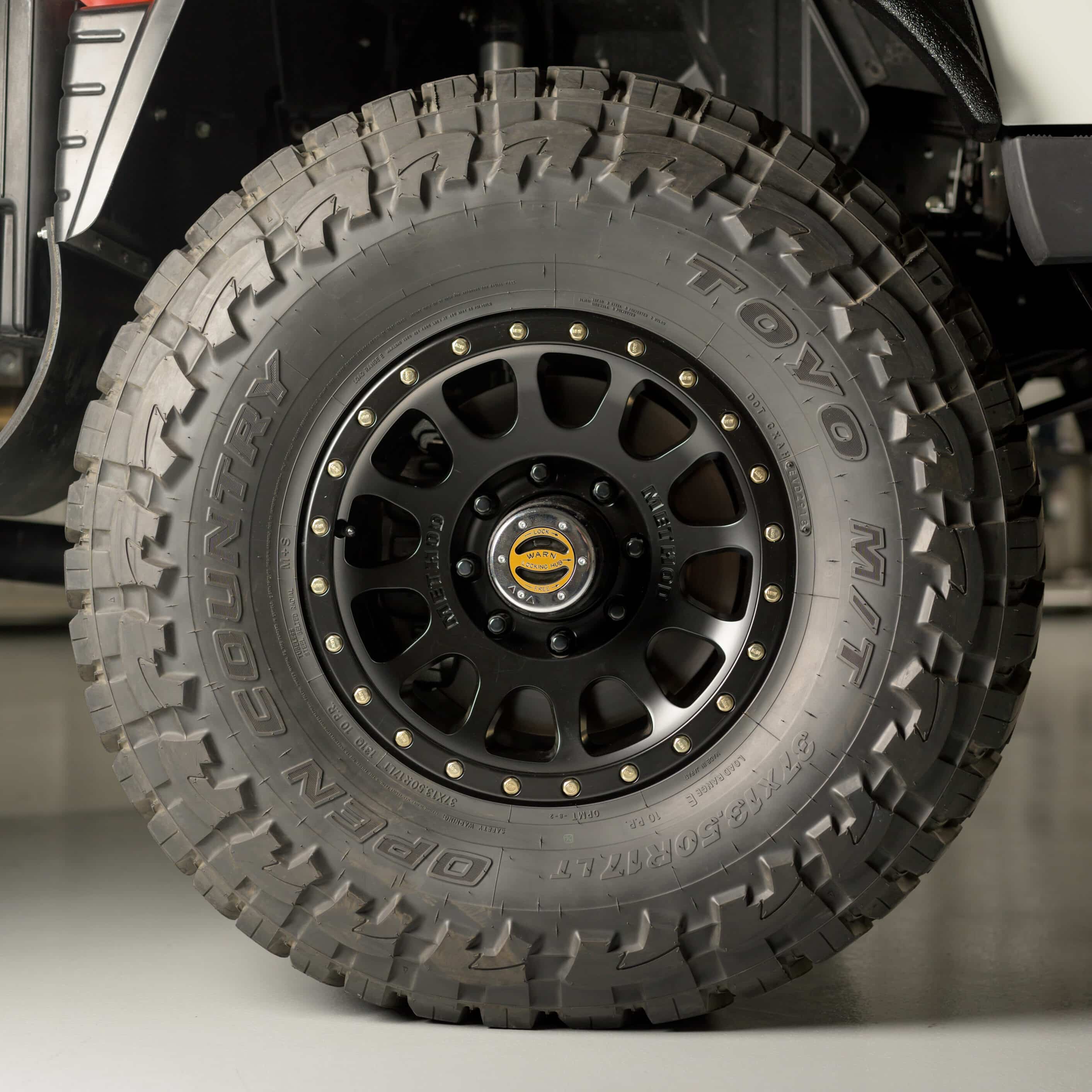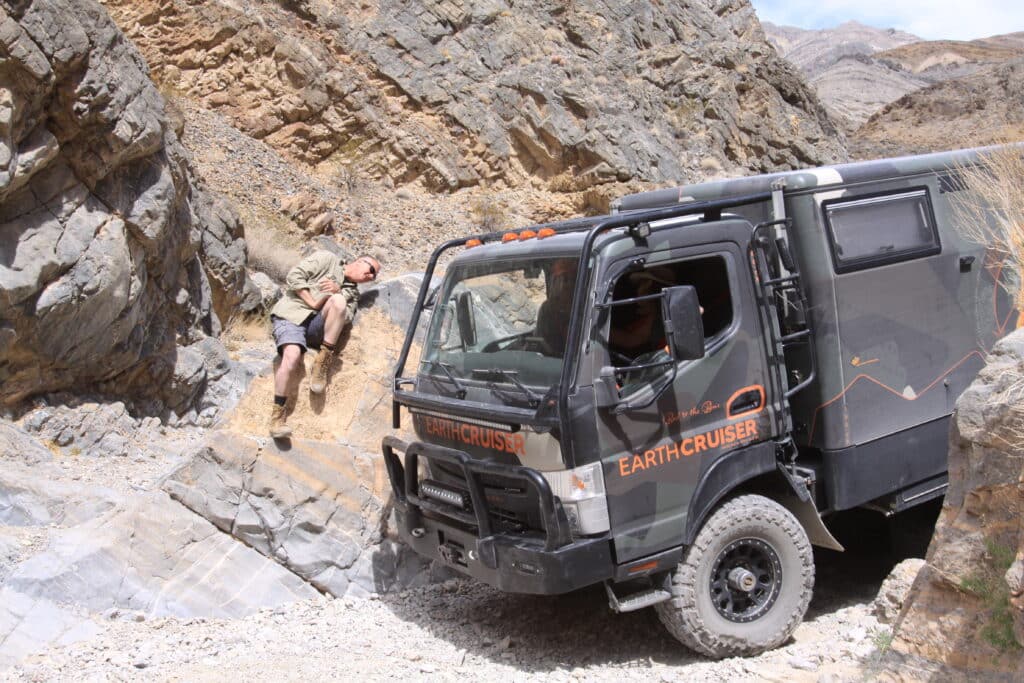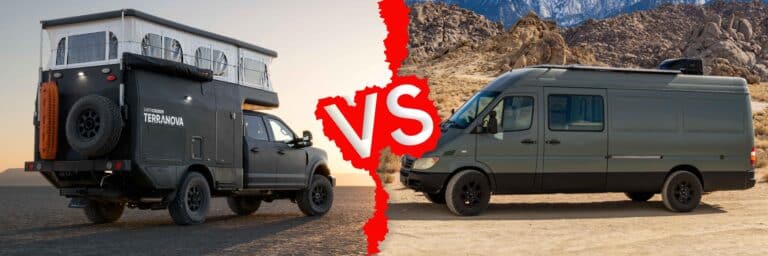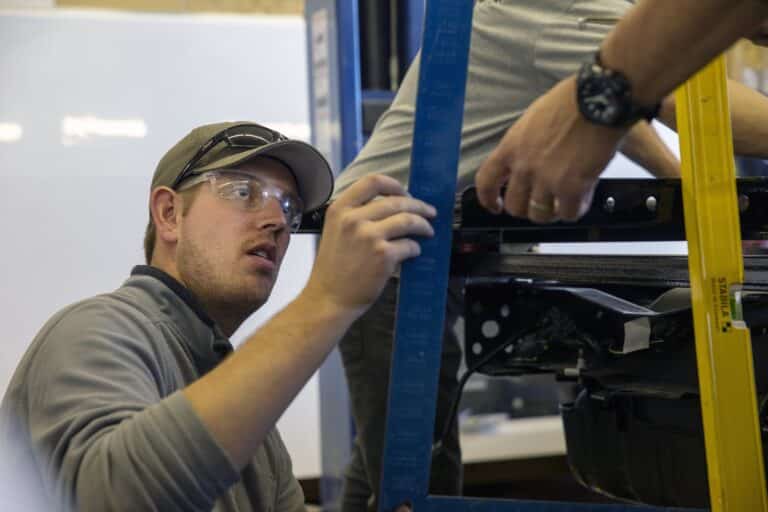We get asked about tires, specifically tire size, a lot. Joshua B. from our EarthCruiser Engineering Crew and EarthCruiser Founder Lance Gilles, provide two unique perspectives as to why we are very deliberate about the size and weight of the tires we use on our vehicles.
When considering any overland vehicle build, start from the tires, they are the first things to consider, not the last. Joshua and Lance share important points from technical and field experience perspectives surrounding tires.

Joshua B – EarthCruiser Engineer
Weight
Weight is the number one reason that we don’t use a tire bigger than 37 inches. The 37 x 13.5 Toyo M/T we use weighs approximately 94 pounds per tire. Add in an aftermarket wheel and your wheel/tire combo can weigh over 125 pounds. That weight is a lot more manageable in comparison to a 40-inch wheel/tire combo that typically weighs more than 200 pounds. When you are in the middle of nowhere with only the tools onboard, managing a lighter weight is preferred.
A heavier wheel/tire combo will also put extra strain on your drivetrain components. Wheel bearings, u-joints, and steering components will wear out faster overtime, which can lead to a failure in the field.
Worldwide Availability
37-inch tires are typically available at retail tire stores without needing special order both in the US and globally. Being stranded in North America and needing a replacement tire is one thing but being stranded in another country is a whole different ballgame. We were deliberate in choosing vehicle components that can be sourced widely around the world. Being very specific in the brand of tire and size can mean the difference when fixing an issue and getting back on road quickly.
Chassis Clearance
Lastly, the way your vehicle is designed can have a major impact on tire size selection. Going too big may mean suspension and fender alteration. And if you don’t have the proper wheel offset, wheel spacers may be needed to push the tire further outboard. Wheel spacers are not recommended in an Overland build. They put too much stress on the wheel hub components and are just not practical for this application.

Lance Gillies – EarthCruiser Founder/CEO
Always build your truck from the tyres up, they are the first things to consider in any overland vehicle build, not the last.
So often we see vehicles that have outgrown the tyre capacity when the “must have” overland gear shopping list grows. Inevitably, a bigger must better conclusion is reached.
The “oh my goodness they make my truck look so tough and now I really can go EVERYWHERE” military tyres have a few down sides.
By design, they are made to carry a lot of weight, are incredibly tough and have superb traction. That is exactly what we are looking for, right? Hmmm, well it depends.
Military specification tyres can do all that, no question. They are also designed to be fitted to military type rims that typically have military road and convoy speed limits applied. Ever been caught behind a military convoy doing 80KLM (50 MPH)? No problem, you will fit right in. On that note, the military have trained personnel to change flat tyres, they never travel alone in vehicles fitted with military grade tyres, they don’t carry the gear to change them, there is a clue there.
I don’t know about you but flat tyers are a pain in the neck. Rarely, if ever, do they happen on a nice sunny day beside a quiet creek with several good Samaritans to help. No, usually flats happen when it is wet, muddy, and cold beside a busy highway with other road users viewing you as a nuisance rather than someone in need of assistance. Changing those rims and tyers by oneself is no small thing, changing them when they are flat, shredded and or full of mud can be nothing short of dangerous.
The other thing to consider is actual on road performance. Wet and icy conditions can get very entertaining or terrifying depending on your idea of fun. Road noise, life expectancy (of the tyers) and retail availability when they need to be changed can be adventure all in themselves.
The bigger the tyre, the less fuel efficient. Also, steering gets fun too. Have your ever tried to turn a vehicle with military sized tyres and in a tight trail situation? That is tough.
In summary, keep your truck a light as possible, it is not a race truck, it is there to take you to faraway place in comfort and style with as little fuss and drama as possible, the rest is just for show.










